Bloomington gathers more feedback on College-Walnut corridor overhaul
Bloomington planners are gathering public input on redesign options for the College-Walnut corridor, including possible two-way traffic. Open houses and pop-up events, as well as an online form, are the tools city staff are using to collect feedback.
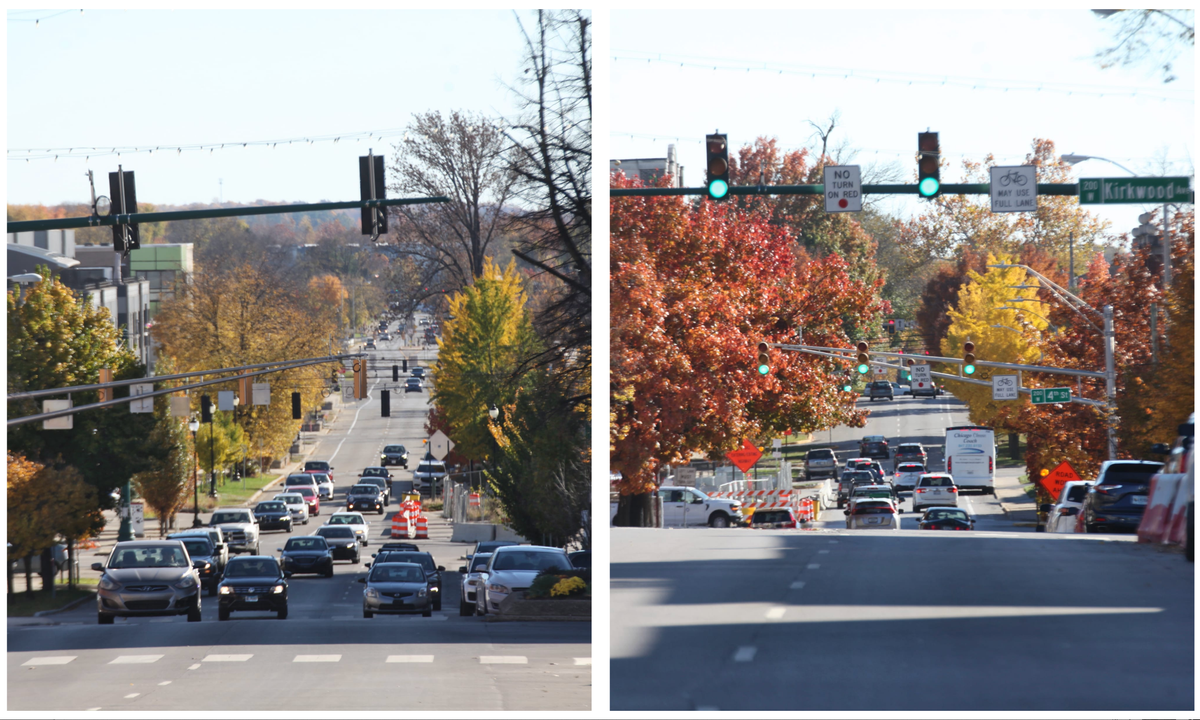

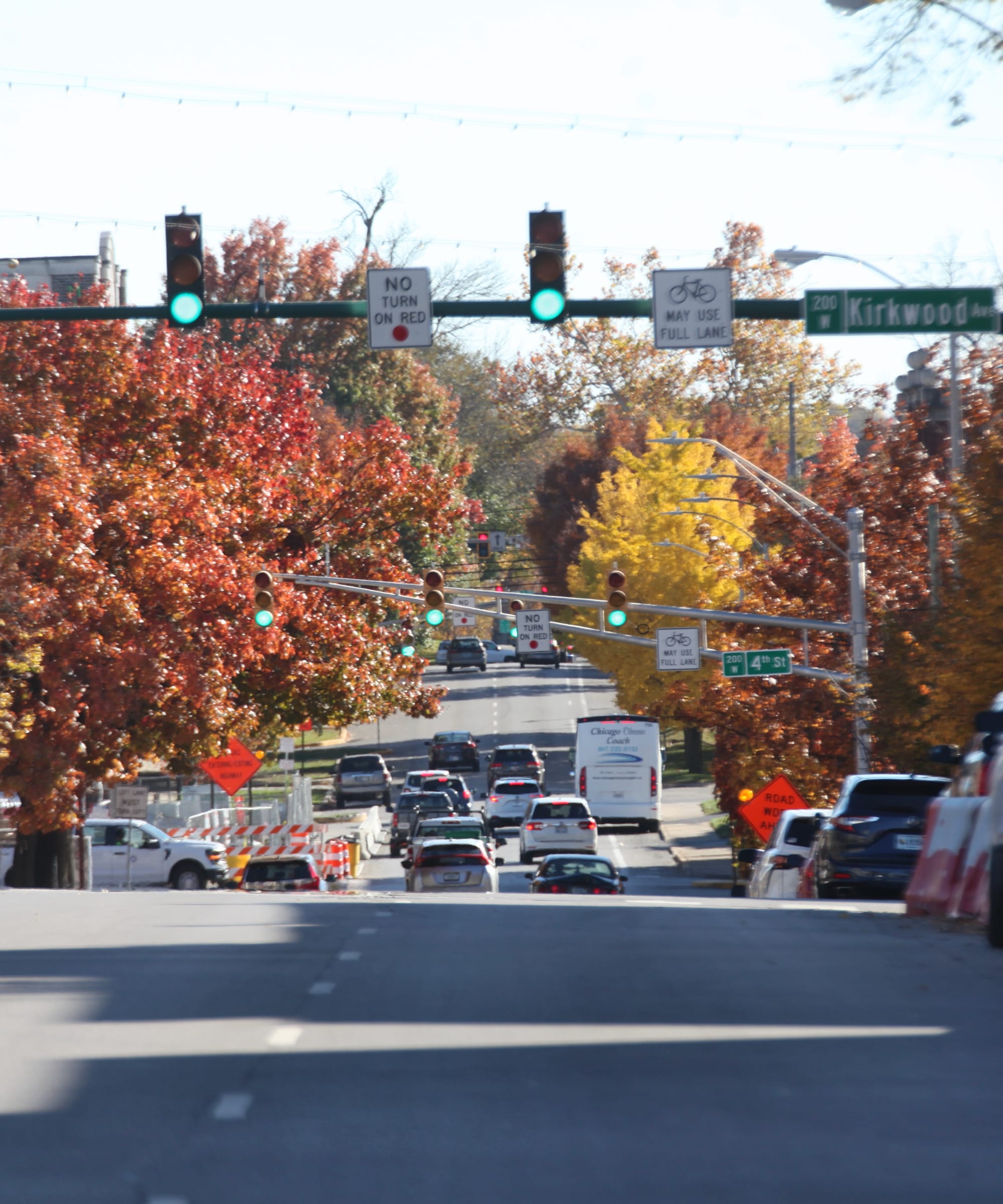
Left: The view looking south down Walnut Street, from 6th Street. Right: the view looking south down College Avenue, from 6th Street. (Dave Askins, Nov. 6, 2025)
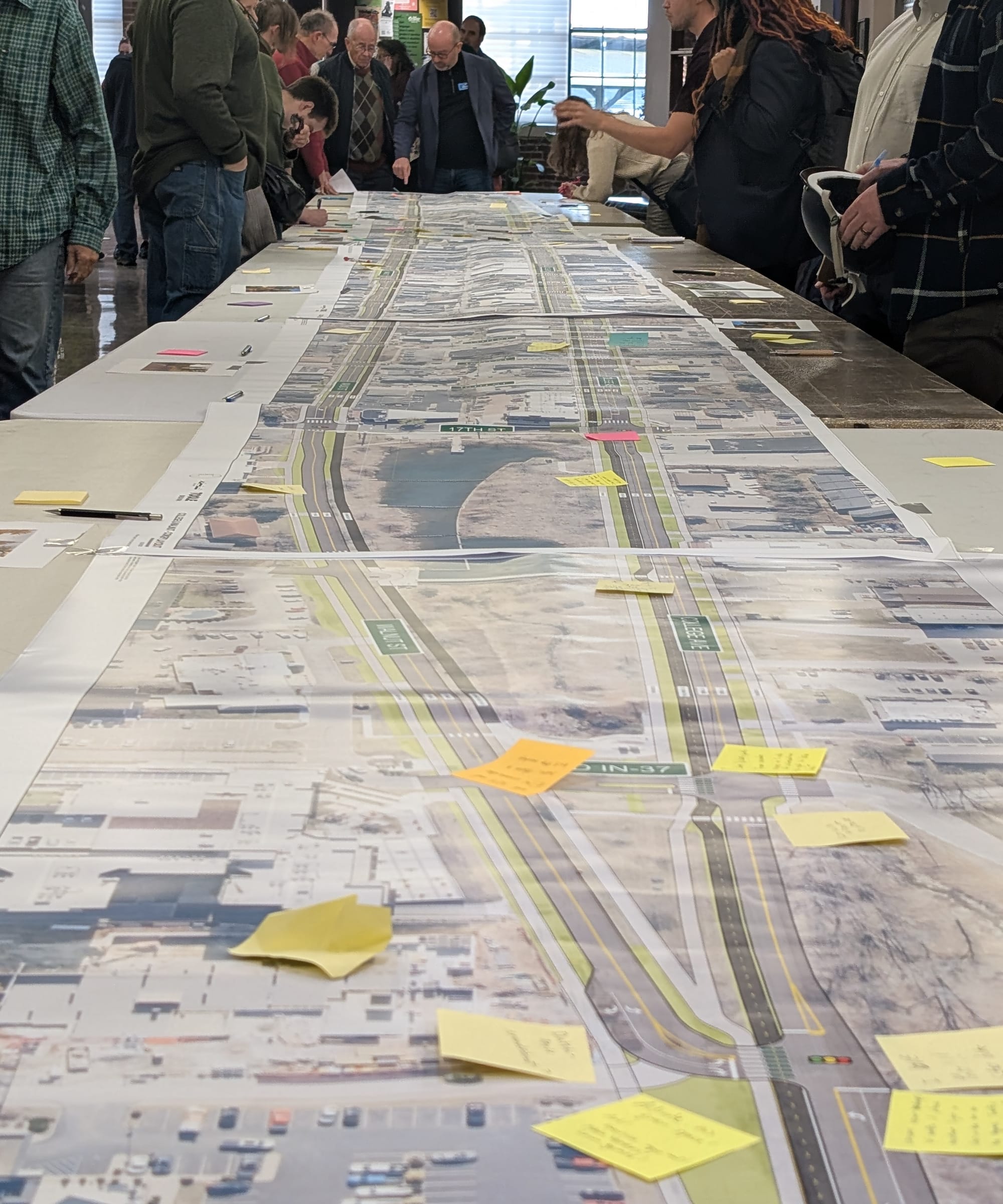
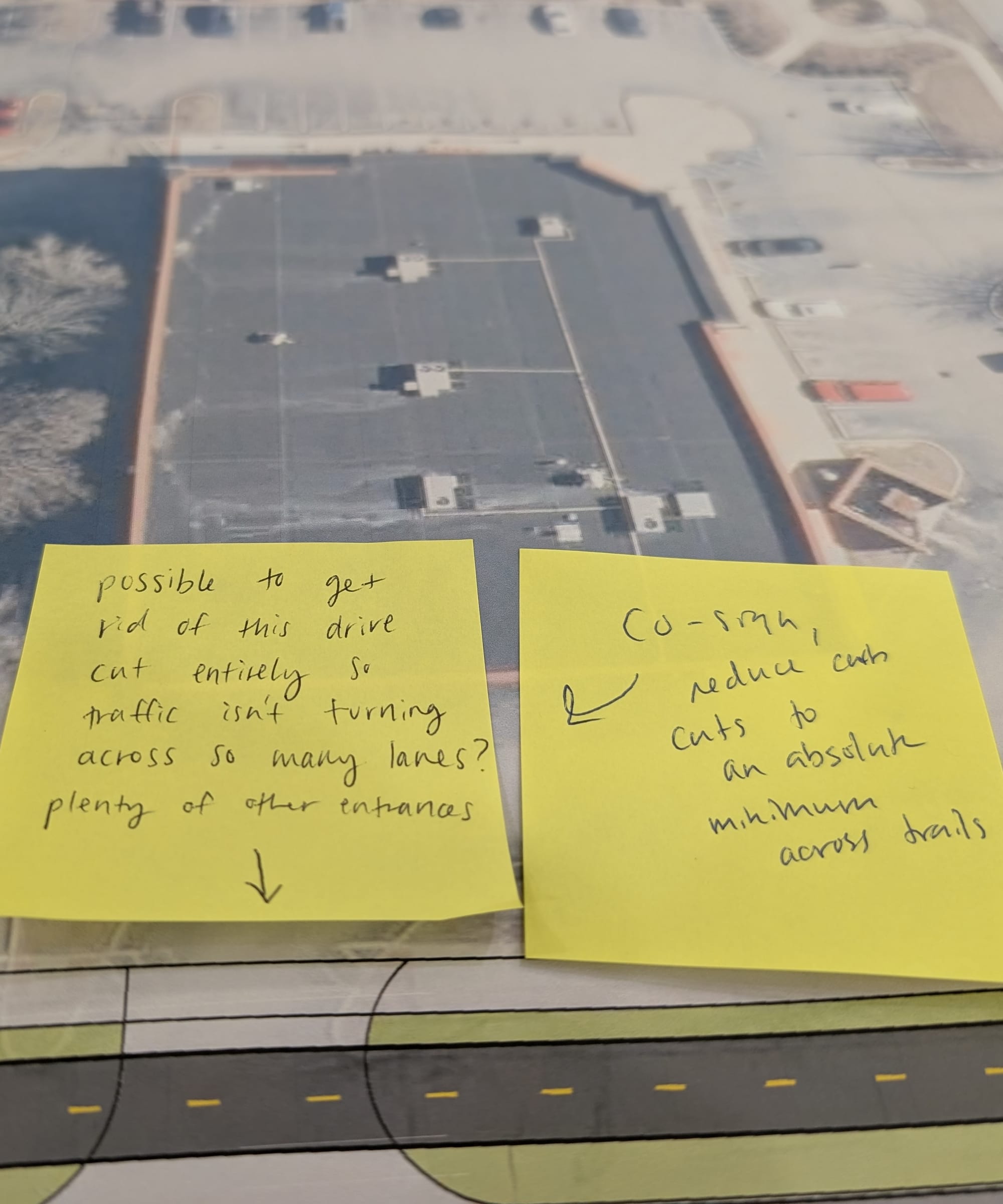
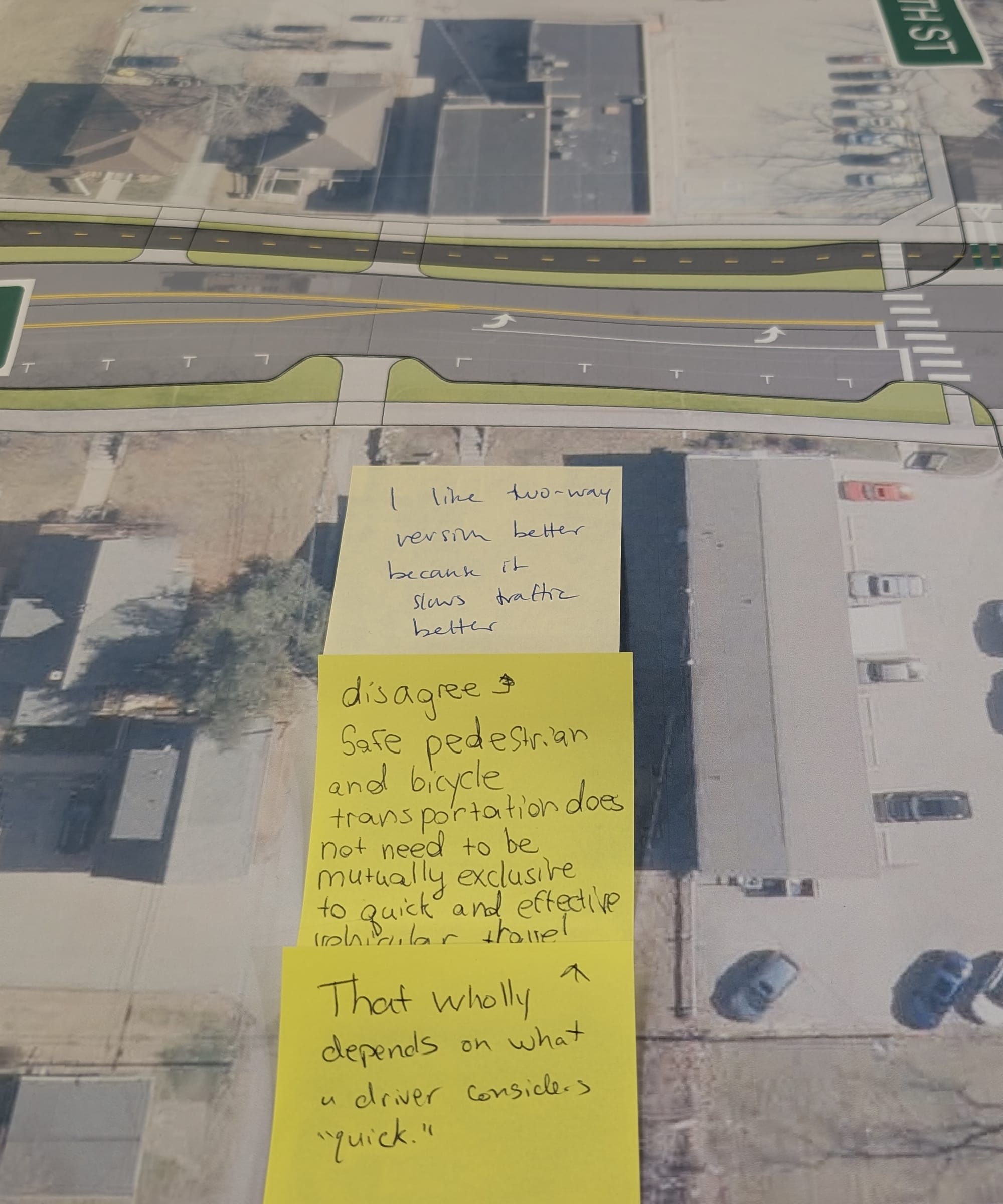
Sticky notes are affixed to the big printouts of the corridor by visitors to the Oct. 30, 2025 open house. (Dave Askins, Oct. 30, 2025)
For at least another three weeks, the city of Bloomington planning and transportation staff will be collecting feedback from residents and visitors to the College-Walnut corridor, which is the main north-south transportation artery through the city.
The corridor is now a pair of one-way streets—College Avenue on the west, which carries traffic one-way south, and Walnut Street on the east, which runs one-way north. Off-and-on since at least 2018, when the city’s transportation plan was under development, the possibility of converting each of the streets to a two-way configuration has been a topic of discussion.
In the vicinity of the courthouse square in downtown Bloomington, each of the streets is three-traffic lanes wide with on-street parking on both sides.
For the current round of input, the city has already held two open house events at city hall, and “popped up” at a couple of places along the corridor, meeting people who are going about their ordinary business. There’s also an online form people can use, to give their feedback. More pop-up events are planned in the next few weeks.
At the two open-house meetings in the last week of October, people were invited to visit city hall, where 20-yard-long printouts of satellite images, overlaid with possible infrastructure improvements, were set up on tables for closer inspection. One alternative maintained one-way traffic for each of the streets. The other alternative showed a two-way configuration.
But both options included a lot more than just changes to the direction of traffic—with bumpouts, an urban trail for non-motorized traffic, reverse-angle on-street parking, among many others.
Attendees of late October open houses could turn in feedback forms and write comments on sticky notes and place them directly on the big printout. Planning services manager Ryan Robling, who is leading the project, was one of several city staff from planning and engineering, who were on hand.
Robling told The B Square that sticky notes from the first open house were left in place for the second one, which meant that visitors quickly recognized the feedback mechanism that staff were hoping they would use. There were places where threads of sticky notes evolved, as visitors commented on the sticky notes already left by others.
The content of the sticky notes will be incorporated into the same dataset generated by the online form.
The B Square asked Robling what he thinks the biggest misconception is that he has heard so far about the proposals. He said it’s the idea that “If it ain’t broke, don’t fix it.” Robling points to measured data along the corridor, which includes 150 crashes a year each year, average speeds well above the posted limit, 40 serious injury crashes from 2018-2022 and four fatal crashes during that same period. That is, Robling thinks it is, in fact, broke.
Robling also pointed to other factors besides roadway safety, including the fact that Bloomington’s downtown central business district doesn’t really expand south past 3rd Street or north past 7th Street. Drainage issues are another problem that needs to be addressed, he said. About the crashes, Robling said, “There are fatal and serious injury crashes that are forever affecting people—and we can do better.”
The option to maintain one-way traffic is not a “do nothing” scenario, Robling said. That option still includes various components that are meant to improve roadway safety for everybody who moves through the corridor.
Planning and transportation director David Hittle responded to an emailed The B Square question by describing his impressions of the open houses, which he attended. He said many open house visitors came prepared—some with lists of ideas and concerns.
The big printouts, Hittle said, also “seemed to foster longer and more in-depth conversations among attendees and staff.” Even though pop-up events held out in the corridor itself tend to result in shorter conversations, they’re the best way to get feedback from pedestrians—people who otherwise might not set aside time to attend a more formal meeting or respond to a written survey, Hittle said.
The big printouts, which are available for download on the project web page, include details for essentially every intersection in the corridor. Earlier this year, an expansion to the scope of work on the College-Walnut project by consultant Toole Design was approved by the board of public works. That brought the total value of the contract to $264,682, adding 23 more intersections to the four that were originally studied.
There’s no fixed date for a final recommended scenario, but it won’t be before sometime in spring 2026.


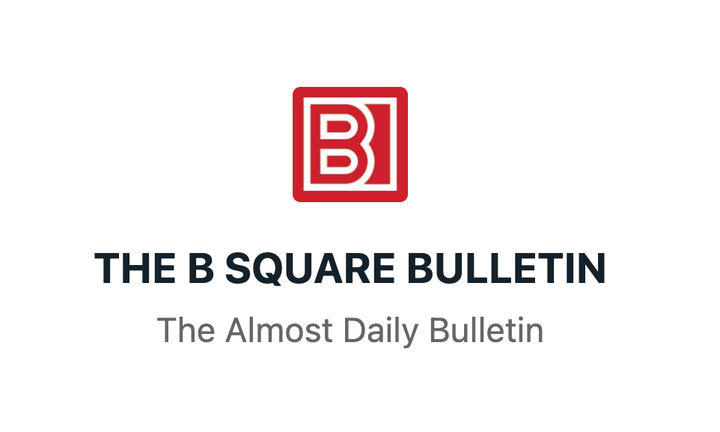

Comments ()